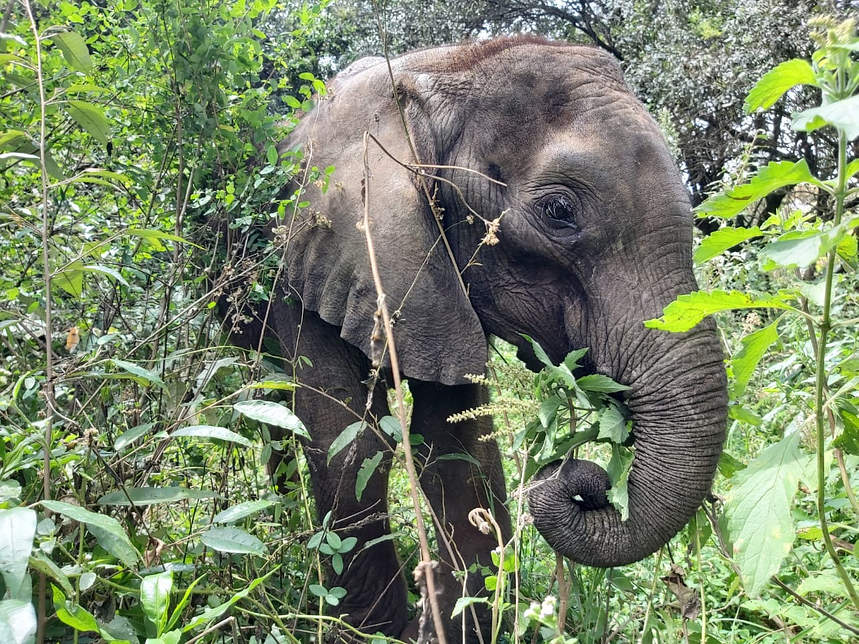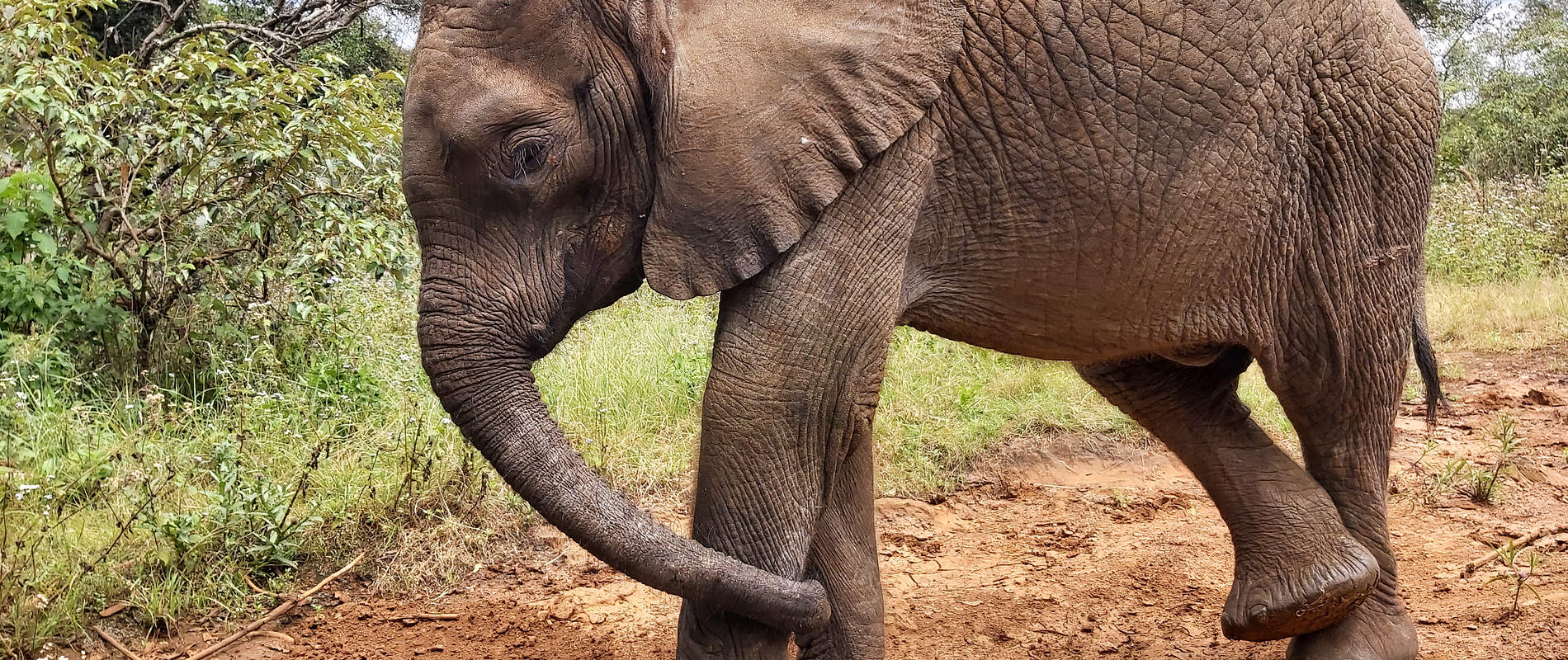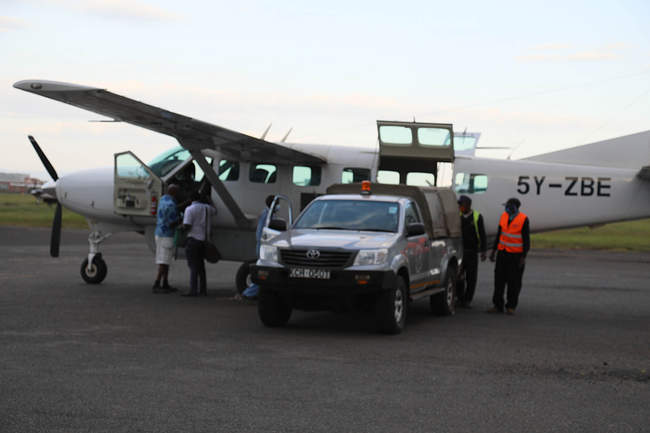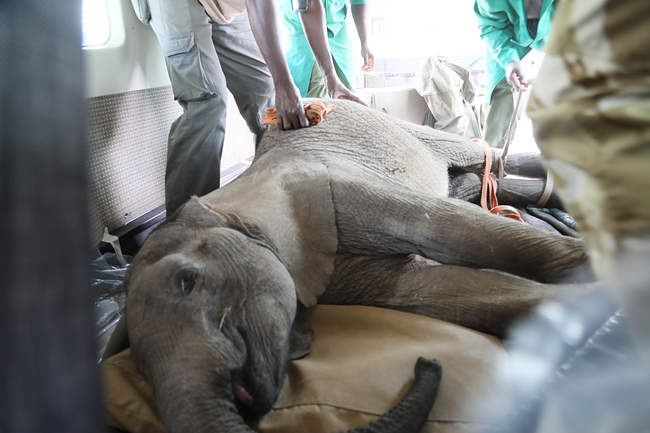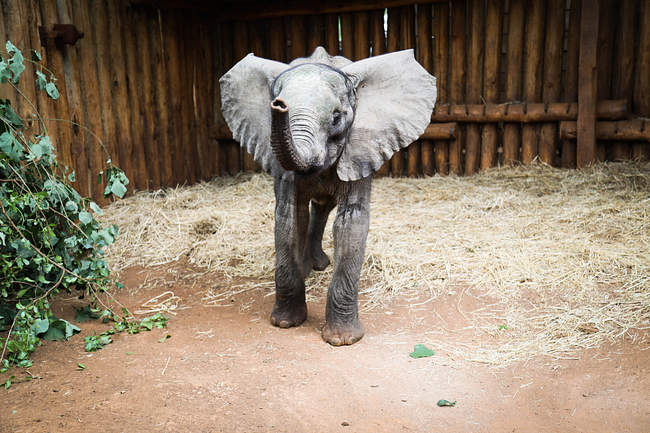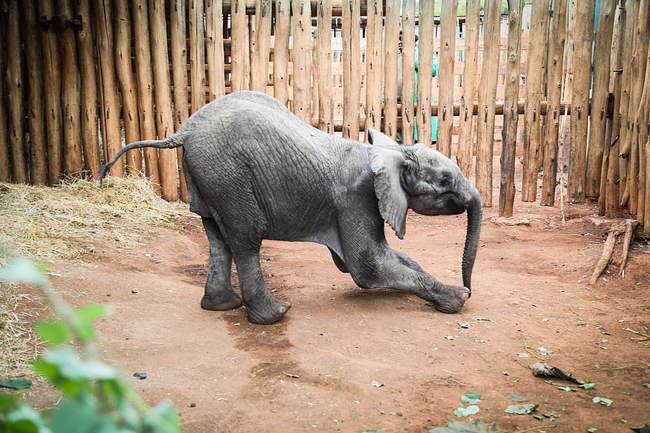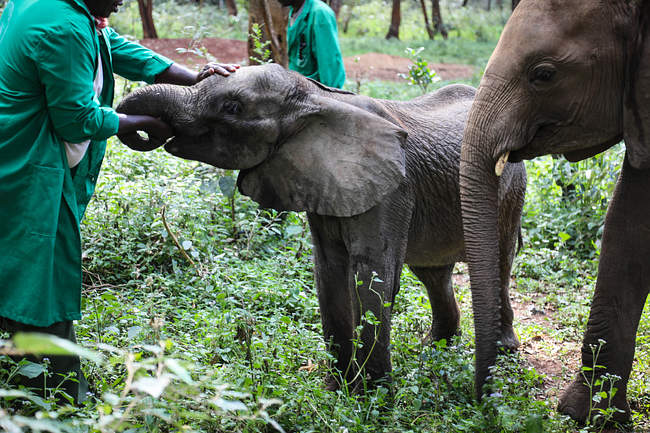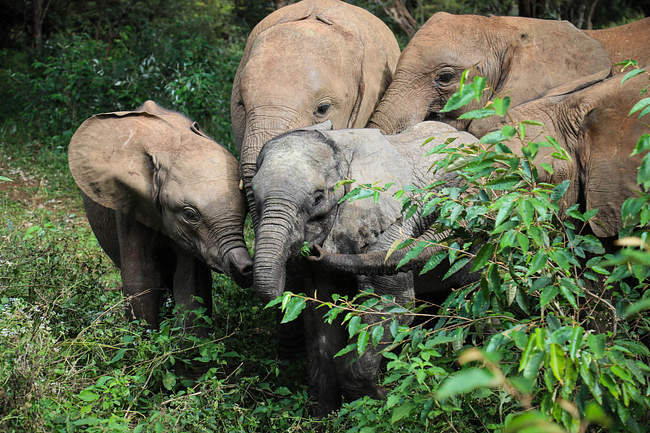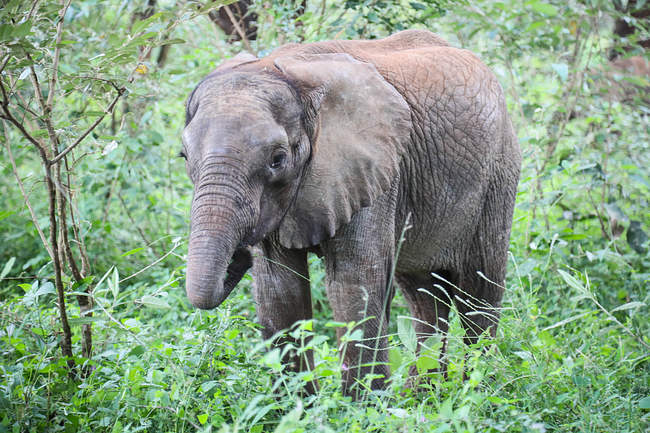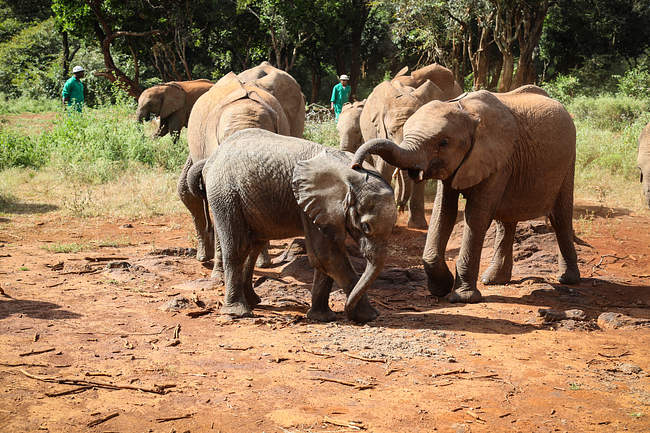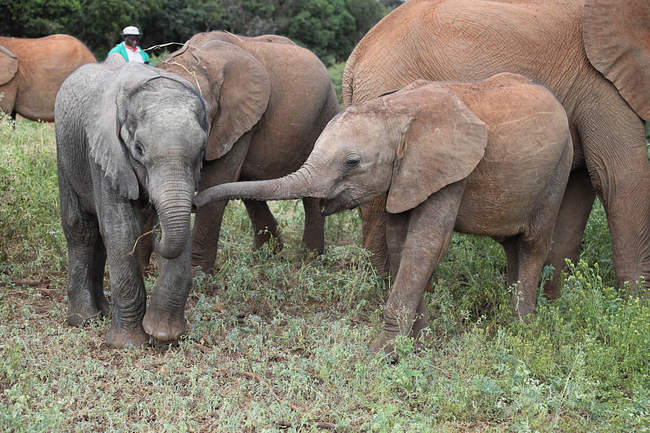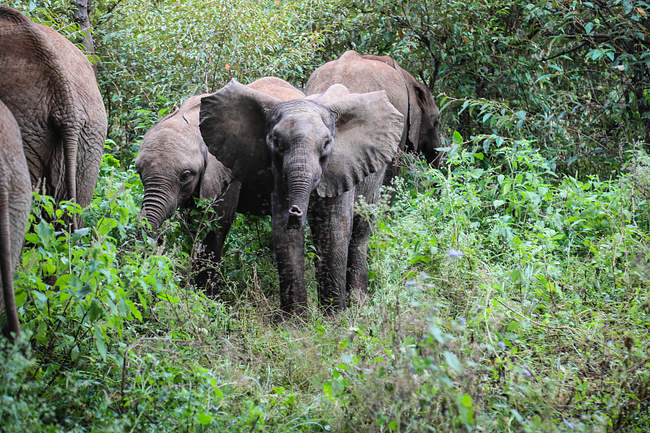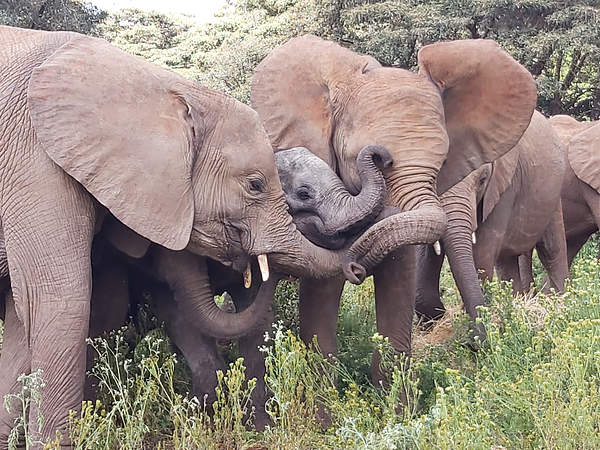In early June, Masai herdsmen reported a lone calf that was trying to follow their grazing cattle. Rangers from Elephant Aware also spotted the young elephant in the Siana area of the Masai Mara, and reported her presence to the Kenya Wildlife Service (KWS). The decision was made to wait and see if she would be absorbed back into a herd. However, several days passed and while a number of herds came and went, she was left behind despite her plaintive cries.
The decision was made to wait and see if she would be absorbed back into a herd. However, several days passed and while a number of herds came and went, she was left behind despite her plaintive cries. By Saturday, 6th of June 2020, she was still on her own and rapidly losing condition. Olarro Conservancy management and Elephant Aware staff noted she was keeping distant company with an injured bull elephant, so our SWT/KWS Mara Mobile Veterinary Team — who, fortuitously, had just returned from off duty the previous day — was called to the scene. They were joined by Narok County Government Rangers, Elephant Aware and Olarro Conservancy rangers, and area chief Mr. Gilisho. The group decided to attend to the baby first.
In the meantime, our Nairobi Headquarters got the necessary approvals in motion to execute a rescue. Things are a bit more complicated amidst the Covid-19 pandemic, but thankfully, permission was swiftly granted. Two Nursery Keepers, along with all the necessary equipment and medicine, hopped aboard our flight from Nairobi to the Masai Mara.
Back in the Mara, the group on the ground coordinated their rescue plan. The calf was browsing in a marshy area, so the vet team ushered her to more accessible terrain. She was weakened after so many days without her mother and didn’t resist much. Assisted by the rangers at the scene the team tied a rope to her front leg and then gently guided her onto a canvas stretcher. She was then loaded into the vet’s Land Cruiser and driven to the Siana airstrip. Because of all the stakeholders assisting, the operation was a smooth one.
They didn’t have to wait long for the Nairobi team, and as soon as the plane touched down, they quickly brought her on board. The hour was getting late, but the SWT/KWS Mara Mobile Veterinary Team turned right around to attend to the injured bull. We’re happy to report that, despite the fact that he had three arrowheads embedded in his body, his wounds were not life threatening and he is expected to make a complete recovery.
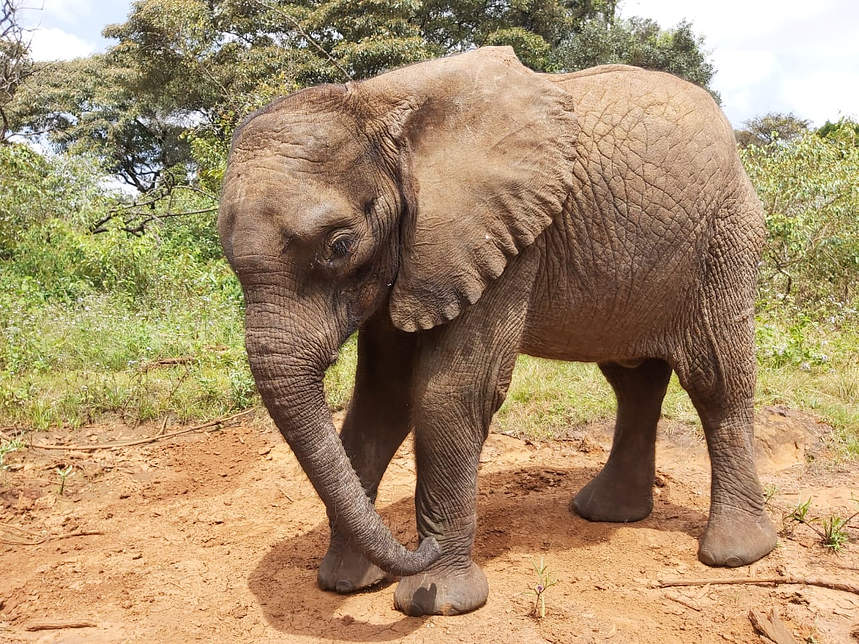
Details about what befell the calf are scant but we estimate her to be around 15 months old. We know for certain she had been without her mum and milk for at least five days, as indicated by her poor body condition, sunken cheeks, and hollow temples. She was very nervous upon her arrival at the Nursery, but her hunger eclipsed all fear, and she immediately accepted her milk bottle when it was offered. This was a good sign indeed, and her first night at the Nursery was a peaceful one. In between gulps of milk and water, she eagerly tucked into the buffet of greens carefully hung in her stable. Her neighbour, Larro, was a comforting presence and eased her entry into this unfamiliar new environment.
After the rest of the Nursery herd headed out into the forest the next morning, we brought the calf into a large stockade so she could acclimatise to the Nursery and enjoy the sunshine and red earth. This also allowed her to feast on plenty of vegetation and milk, bolstering her strength without distraction. We continued this routine for two days, until it was finally time for her to join the others out in the forest.
There are lots of older girls at the Nursery, and unsurprisingly, everyone took a keen interest in her. While she lapped up the attention from the other orphans, she initially skirted around the Keepers and only approached them for her milk. However, as days turned into weeks, she embraced her human family. Roho and Naleku are about the same size as her, and as the babies of the herd, they find themselves pampered from sunup to sundown.
This little girl has such a sweet, expressive face, which we are able to appreciate all the better now that she is coming out of her shell. She is very independent and self-sufficient, but this is so often the case with female orphans, who are born to lead. We have named her Olorien, after the area in which she was found. In the Maa language, Olorien means “place of the olive trees” — and it’s a beautiful name for a beautiful girl.
